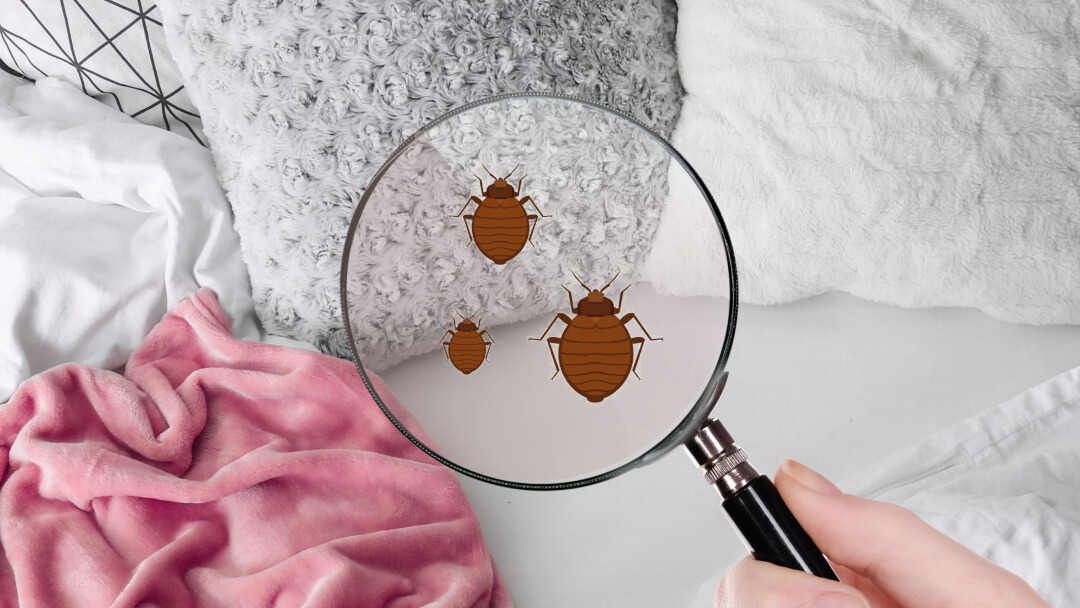Comprehensive A1 Bed Bug Extermination in Houston Area
Wiki Article
Recognizing the Lifecycle of Pests for Targeted Control Methods
Comprehending the lifecycle of parasites is a fundamental aspect of effective pest monitoring methods. By comprehending the various stages of development that insects undertake, a more targeted and exact strategy can be embraced to manage their populaces. This expertise not only clarifies the vulnerabilities within the parasite lifecycle yet also leads the way for implementing critical procedures that can interrupt their development and recreation cycles. With a much deeper understanding of how pests thrive and advance, tailored control strategies can be created to deal with certain factors in their lifecycle, eventually causing even more effective parasite management results.Importance of Understanding Parasite Lifecycle
Comprehending the lifecycle of parasites is crucial for establishing effective and targeted control methods in insect management. By understanding the various stages a bug goes via from egg to grownup, pest control experts can recognize prone factors in the lifecycle where intervention can be most effective.In addition, identifying the details ecological problems needed for every stage of the bug's lifecycle can lead choices on environment adjustment or exclusion techniques to decrease and disrupt the lifecycle bug populaces. This understanding allows pest monitoring experts to implement positive procedures instead of counting exclusively on responsive therapies, causing even more lasting and lasting parasite control remedies. Inevitably, a thorough understanding of pest lifecycles equips parasite control experts to customize their approaches successfully, maximizing and lessening environmental impacts control end results.
Secret Stages in Parasite Development
To properly carry out targeted control approaches in pest monitoring, a critical facet lies in thoroughly determining and comprehending the vital phases in bug growth. Parasite development typically is composed of several crucial phases that are essential for their lifecycle and monitoring.

Susceptabilities in Insect Lifecycle
Throughout the various phases of a pest's lifecycle, unique vulnerabilities emerge that can be purposefully targeted for effective control procedures. One critical vulnerability lies in the egg phase, where bugs are frequently extra at risk to particular insecticides or biological control agents because of their soft external shell, making them simpler targets for intervention. In addition, the nymph or larval stage offers vulnerabilities as bugs go through rapid growth and development, requiring high energy consumption that can be exploited by disrupting their food resources or presenting growth preventions. Pupal phases, identified by stability and change, use a home window for targeted control through physical barriers or specific treatments that impede effective appearance. Ultimately, grown-up pests, while much more resilient as a result of their reproductive capability, can still be prone throughout mating or egg-laying tasks, which can be interfered with through pheromone catches or sterilization methods. Understanding these vulnerabilities in the insect lifecycle is crucial for developing accurate and reliable control techniques that efficiently manage bug populaces while decreasing ecological effect.Implementing Targeted Control Procedures

Carrying out targeted control steps commonly involves a multi-faceted technique. This may consist of environment modification to make the setting less welcoming to insects, such as eliminating standing water for insect control or securing entrance factors for rodents. Furthermore, biological control methods can be used, where natural killers or pathogens are presented to maintain pest populaces in check.
Integrated Insect Monitoring (IPM) techniques that incorporate different control procedures in a collaborated and lasting manner are commonly the most efficient next page in attaining lasting pest monitoring goals. By implementing targeted control actions based on an extensive understanding of parasite lifecycles, insect populaces can be efficiently regulated while decreasing dangers to human health and wellness and the setting.
Enhanced Pest Management Practices

Furthermore, the consolidation of organic control representatives, such as all-natural predators or microorganisms of insects, can assist reduce dependence on chemical pesticides and promote a much more balanced ecosystem. Carrying out physical obstacles and catches can likewise be part of improved parasite management methods, providing non-toxic and targeted solutions for pest control. Additionally, making use of pheromones and various other semiochemicals can interfere with pest breeding patterns and interaction, bring about minimized parasite populations over time.
discover this info here
Conclusion
By identifying key stages in pest advancement and vulnerabilities in their lifecycle, targeted control actions can be carried out to lessen insect populations. Improved bug administration practices can assist decrease the dependence on broad-spectrum pesticides and advertise even more lasting and eco friendly parasite control methods.Comprehending the lifecycle of pests is necessary for creating reliable and targeted control techniques in parasite monitoring. By understanding the different phases a bug goes through from egg to grownup, bug control experts can identify susceptible points in the lifecycle where intervention can be most effective. Ultimately, a comprehensive understanding of bug lifecycles equips insect control practitioners to tailor their strategies efficiently, optimizing and minimizing ecological impacts control results.
By carrying out targeted control measures based on an extensive understanding of parasite lifecycles, bug populations can be successfully regulated while decreasing dangers to human health and wellness and the setting.
By determining vital phases in parasite growth and vulnerabilities in their lifecycle, targeted control steps can be executed to lessen bug populations.
Report this wiki page